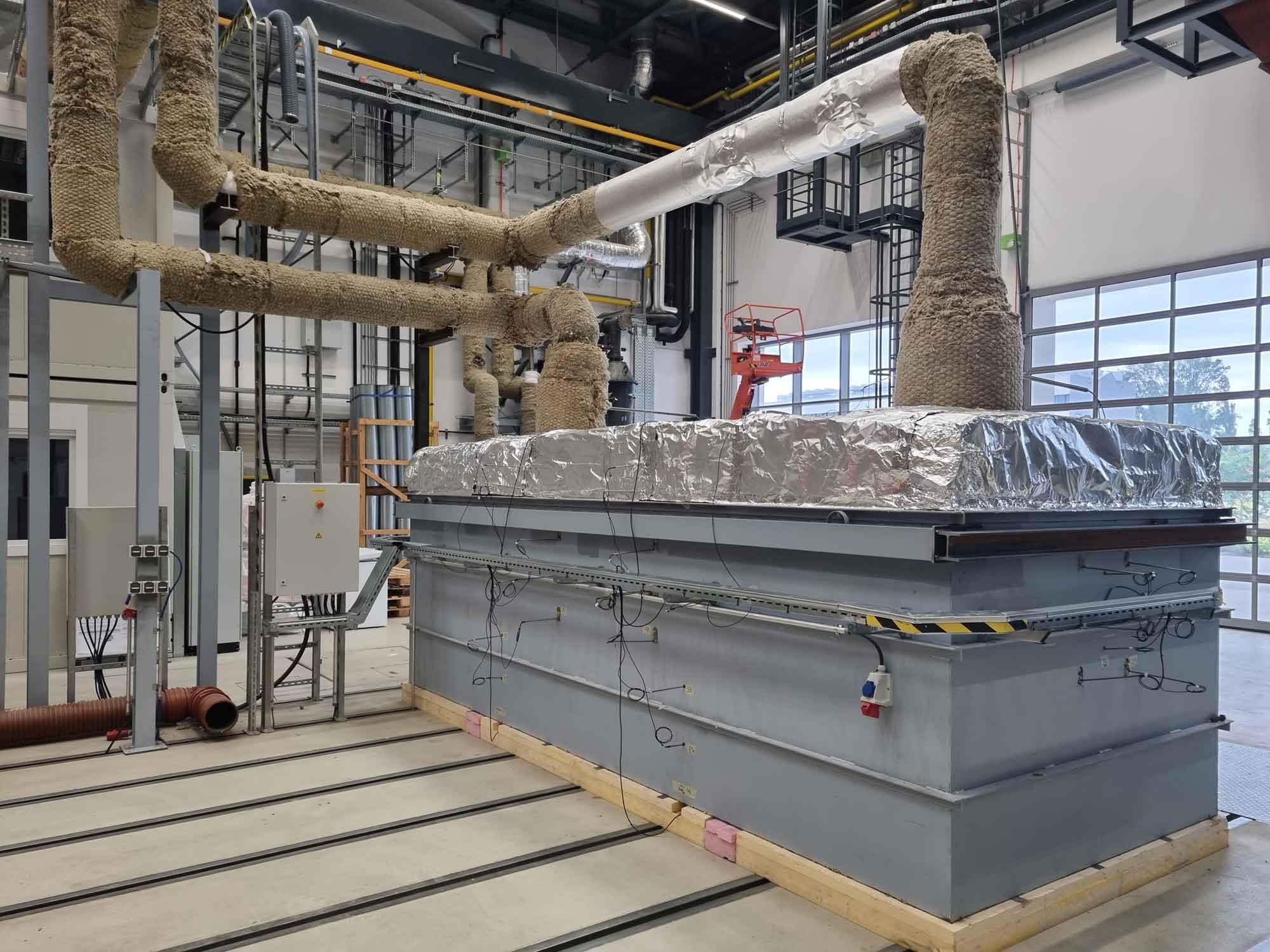The Gmunden cement plant has a waste heat potential of approx. 10 MWth at 400°C. In this project, a project team of research and industry partners1 developed concepts and technologies to utilise this potential and thereby achieve the greatest possible reduction in CO2. The aim of the concepts is to extract waste heat from the industrial plant, store and transport it at a high temperature level via a 1.5 kilometre-long heat transport pipeline to large industrial consumers in the urban area of Gmunden.
Heat extraction
The comparison between the approaches “dust-loaded smooth pipe heat exchanger” and “ceramic hot gas filter + ribbed pipe heat exchanger” has shown financial advantages for the ribbed pipe option. Nevertheless, the smooth pipe variant was chosen for the techno-economic project concept, as the technical risk is lower and the internal material flows can be organised more effectively.
Overall concept
Almost 30 interconnections of the subsystems heat extraction fluid, storage system and district heating system were analysed thermodynamically and with regard to the technical-economic optimum. From these, four concepts were technically designed and compared economically.
Heat-Link
Contrary to the original assessment at the start of the project, a district heating system based on steam clearly emerged as the most techno-economically advantageous solution. The project team was able to work out a technically feasible route between the waste heat source and the potential industrial consumers.
Heat accumulators
The aim of a heat accumulator is, on the one hand to optimise operation, and on the other to maximise waste heat utilisation and, therefore avoid CO2 emissions by decoupling generation and consumption over time. The load profiles of waste heat and heat demand vary greatly and are not in sync. A storage system allows supply and demand to be balanced out. The project made a distinction between operational storage (6 MWh), daily storage (330 MWh) and long-term storage (>4 GWh). The number of storage cycles and, therefore the cost-effectiveness increases with decreasing storage size. For the operating storage variant, Ruth’s steam accumulators and pressurised water accumulators were evaluated from a techno-economic point of view. For daily storage or larger high-temperature storage systems, a gravel storage system was developed, simulated, tested in the laboratory of the TU Wien and evaluated from a techno-economic point of view. For long-term storage with use up to seasonal storage, gravel storage and earth basin water storage systems were evaluated.
CO2-savings and cost-effectiveness
The available waste heat of 70 to 90 GWh (depending on the concept) would have a theoretical CO2 emission avoidance potential of up to 22,000 tonnes (22 kT) of CO2 each year. The variants analysed with operational storage, with daily storage, and without storage systems allow waste heat utilisation in the range of 42 GWh per year to 65 GWh per year (47 to 72% of the maximum potential) at different investment levels. The following key data are the most important input variables for the economic viability of the project: Investment costs, running costs (operating costs), economic observation period (life cycle), interest rate, specific fuel costs, substituted primary energy quantity, subsidies (especially investment subsidies) and the avoidance of other costs (e.g. taxes per kWh or per tonne of CO2) according to the primary energy quantity and emissions avoided. On the basis of the key data currently applicable to the project, it was unfortunately not possible to demonstrate economic feasibility for any of the concepts examined. For even larger heat accumulators, the economic efficiency was worse under the present framework conditions. The project worked out which changes in the framework conditions would make implementation possible.
The macroeconomic simulation results in an increase in the gross regional product of an average of EUR 6.2 million per year and an increase in employment of about 80 employees if the project is implemented
www.nefi.at/en/gmunden/
1 Project Partners TTU Wien/Institute for Energy Systems and Thermodynamics, Energy Institute at JKU Linz, ste.p ZT GmbH, Rohrdorfer Zement, Energie AG Oberösterreich Erzeugung GmbH, Energie AG Oberösterreich Vertrieb GmbH, Porr Bau GmbH, Kremsmüller Industrieanlagenbau KG
A project within the framework of the Energy Flagship Region
NEFI – New Energy for Industry
www.nefi.at/en
